 | TODAY IN SCIENCE HISTORY NEWSLETTER - 25 FEBRUARY |
| Feature for Today |
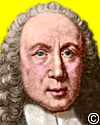 On 25 Feb 1682, Giovanni Battista Morgagni was born, an Italian medical scientist who laid the foundations of pathological anatomy as an exact science. On 25 Feb 1682, Giovanni Battista Morgagni was born, an Italian medical scientist who laid the foundations of pathological anatomy as an exact science.He lived to the age of nearly 90, quite remarkable for his era. Even more remarkable is how productive he continued to be, even late in life. You can read more in this biography of Giovanni Battista Morgagni. |
| Book of the Day | |
| |
| QUIZ | |
| Before you look at today's web page, see if you can answer some of these questions about the events that happened on this day. Some of the names are very familiar. Others will likely stump you. Tickle your curiosity with these questions, then check your answers on today's web page. | |
| Births | |
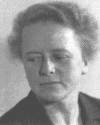 |  Ida Noddack, born 25 Feb 1896, was a German chemist who, working with her future husband Walter Noddack, co-discovered (1925) element 75, rhenium. They found trace amounts in the mineral columbite. Some years later, she commented on the possibility of fission upon hearing the reports of Fermi's 1934 observations of the neutron bombardment of uranium. Ida Noddack, born 25 Feb 1896, was a German chemist who, working with her future husband Walter Noddack, co-discovered (1925) element 75, rhenium. They found trace amounts in the mineral columbite. Some years later, she commented on the possibility of fission upon hearing the reports of Fermi's 1934 observations of the neutron bombardment of uranium.  From what was the element rhenium named? From what was the element rhenium named? |
| Deaths | |
 |  Glenn T. Seaborg (1912-1999) was an American nuclear chemist. During 1940-58, Seaborg and his colleagues at the University of California, Berkeley, produced nine of the transuranic elements (plutonium to nobelium) by bombarding uranium and other elements with nuclei in a cyclotron. He coined a name for the elements in this series. Glenn T. Seaborg (1912-1999) was an American nuclear chemist. During 1940-58, Seaborg and his colleagues at the University of California, Berkeley, produced nine of the transuranic elements (plutonium to nobelium) by bombarding uranium and other elements with nuclei in a cyclotron. He coined a name for the elements in this series. What name did Seaborg give this series of elements? What name did Seaborg give this series of elements? |
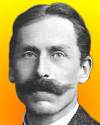 |  Louis Carl Heinrich Friedrich Paschen (1865-1947) was a German physicist who was an outstanding experimental spectroscopist. He matched the newly discovered terrrestrial helium with corresponding lines in the solar spectrum. His name is associated with a series of spectral lines of hydrogen. Louis Carl Heinrich Friedrich Paschen (1865-1947) was a German physicist who was an outstanding experimental spectroscopist. He matched the newly discovered terrrestrial helium with corresponding lines in the solar spectrum. His name is associated with a series of spectral lines of hydrogen.  In which range of the electromagnetic spectrum is the Paschen Series found? In which range of the electromagnetic spectrum is the Paschen Series found? |
| Events | |
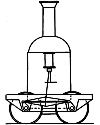 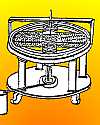 |  On 25 Feb of a certain year, Thomas Davenport patented the first practical electrical motor as "an application of magnetism and electro-magnetism to propelling machinery." The rotating electromagnets have cores of soft iron, wound with copper wire insulated with layers of silk. The wires from the coil run parallel down the shaft to touch copper contacts on the base. These wires make contact with different plates at each half-turn. On 25 Feb of a certain year, Thomas Davenport patented the first practical electrical motor as "an application of magnetism and electro-magnetism to propelling machinery." The rotating electromagnets have cores of soft iron, wound with copper wire insulated with layers of silk. The wires from the coil run parallel down the shaft to touch copper contacts on the base. These wires make contact with different plates at each half-turn.  In which decade was this patent issued? In which decade was this patent issued? |
 |  On 25 Feb 1616, because of his assertion that the earth moves around the sun, a scientist was ordered by Cardinal Bellarmine "to give up altogether the false doctrine... and if you should refuse... you should be imprisoned." Given such a choice, the scientist made a renouncement, but he knew that would not change the real facts of the Earth's motion. On 25 Feb 1616, because of his assertion that the earth moves around the sun, a scientist was ordered by Cardinal Bellarmine "to give up altogether the false doctrine... and if you should refuse... you should be imprisoned." Given such a choice, the scientist made a renouncement, but he knew that would not change the real facts of the Earth's motion.  Who was this scientist? Who was this scientist? |
| Answers |
When you have your answers ready to all the questions above, you'll find all the information to check them, and more, on the February 25 web page of Today in Science History. Or, try this link first for just the brief answers. Fast answers for the previous newsletter for February 24: submarine; coal mines; Henry Cavendish; the decade including the year 1968; red iron oxide. |
| Feedback |
 If you enjoy this newsletter, the website, or wish to offer encouragement or ideas, please send feedback by using your mail reader Reply button. If you enjoy this newsletter, the website, or wish to offer encouragement or ideas, please send feedback by using your mail reader Reply button. |
--
If you do not want to receive any more newsletters, this link
To update your preferences and to unsubscribe visit this link
If you do not want to receive any more newsletters, this link
To update your preferences and to unsubscribe visit this link
! !

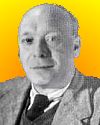
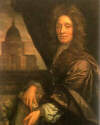


Δεν υπάρχουν σχόλια:
Δημοσίευση σχολίου